 |
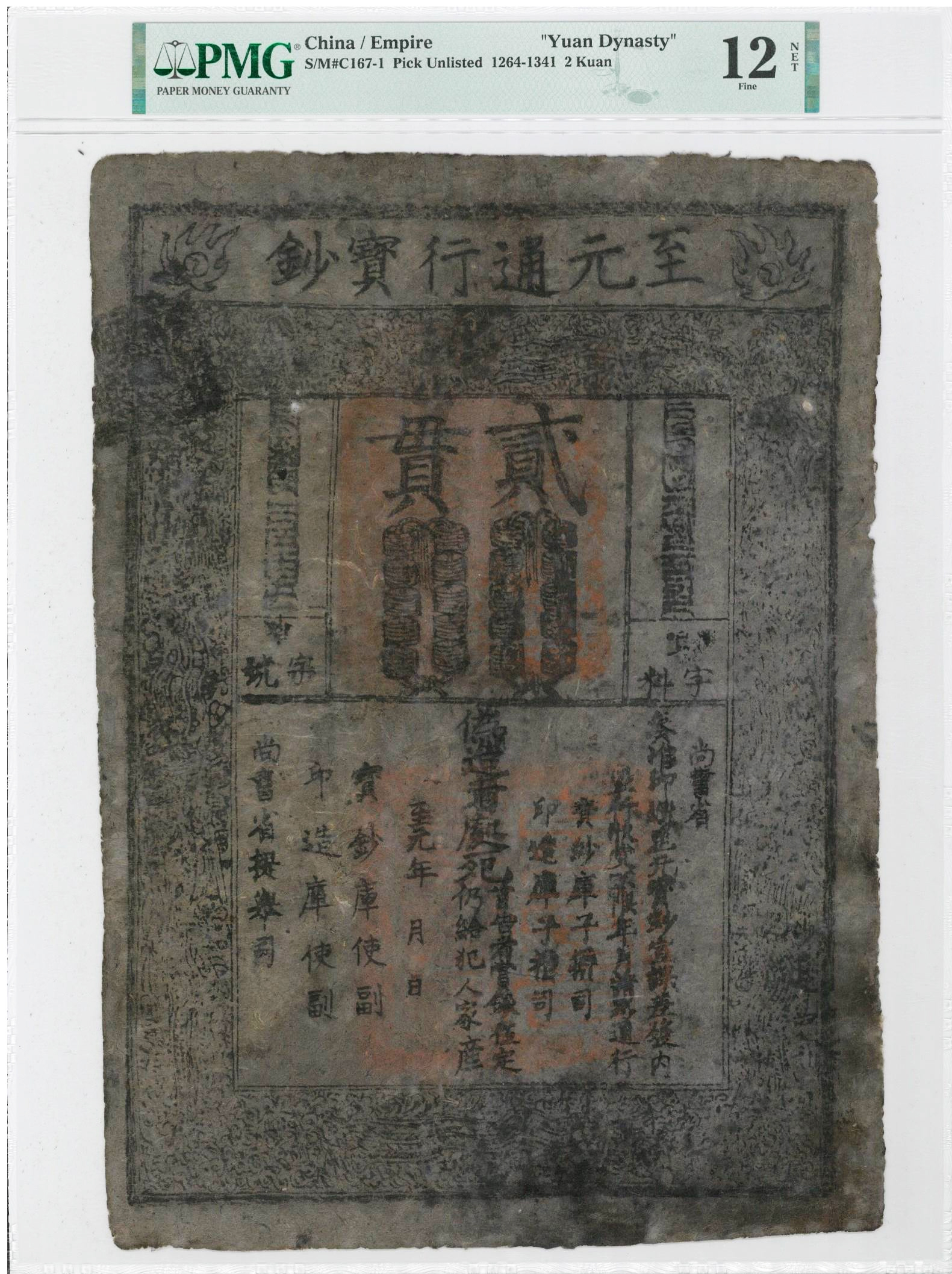 |
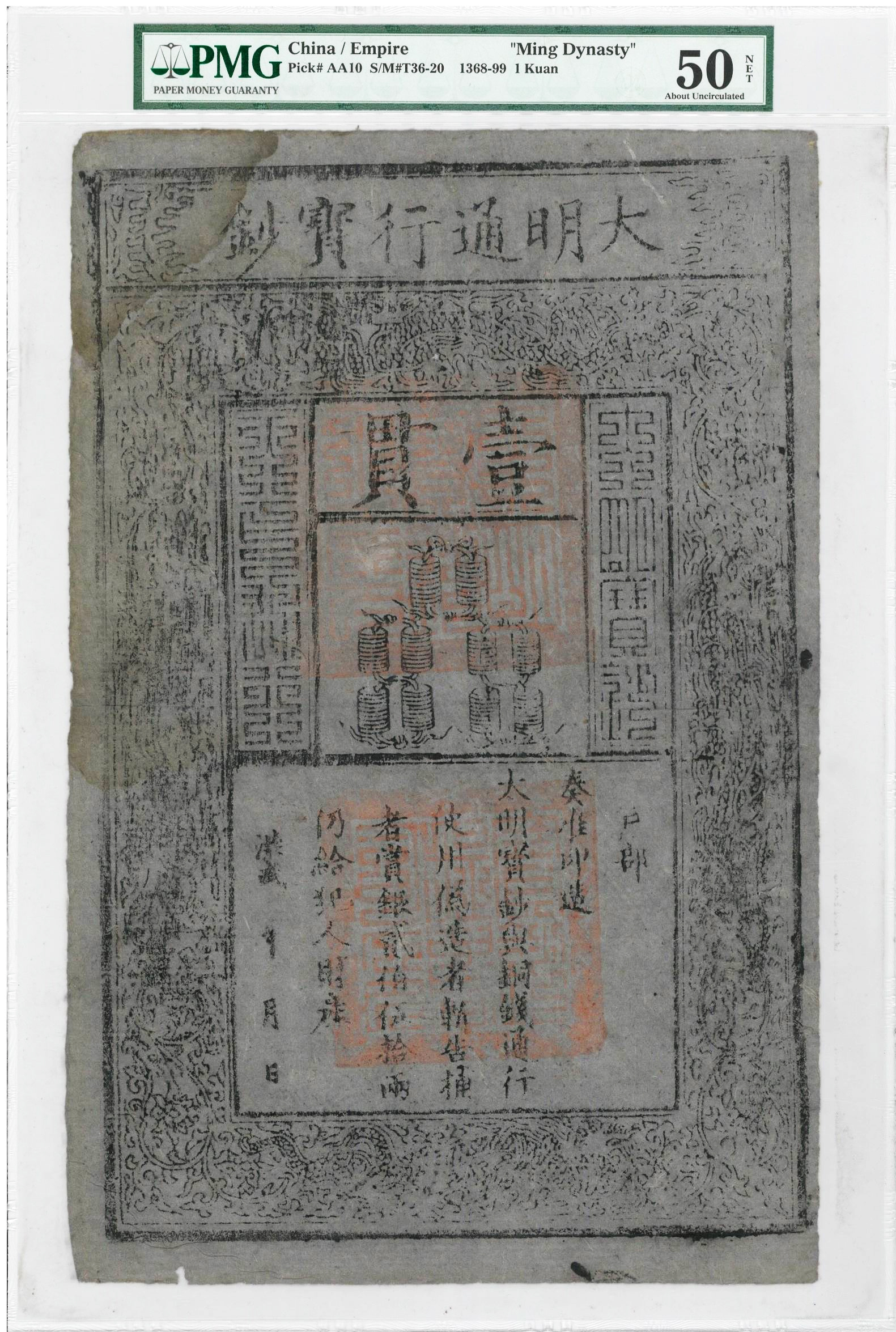 |
| Fig. 1 The rubbing of the old jiao zi ( 交子 ) paper money from the Northern Song dynasty (to be verified) |
Fig. 2 1264-1341 2000-kuan zhi yuan tong xing bao chao [ 至元通行寶鈔 ] from Emperor Zhiyuan's reign |
Fig. 3 1368-1399 1-kuan da ming tong xing bao chao [ 大明通行寶鈔 ] from Emperor Hongwu's reign |
One thousand years ago, the oldest paper money was born in Szechuan during the Northern Song dynasty.
China was the first country to use paper notes. It has been over 1,000 years since the Jiao Zi Bureau was officially established in the first year of the Empire Tian Sheng’s reign in the Northern Song dynasty.
On March 24, 2023, the Academic Conference Commemorating the 1000th Anniversary of the Birth of Paper Money organized by the China Numismatic Society was held in Chengdu, where the experts discussed and proved the time, characteristics, significance and other issues of concern to academics and the society. Through the conference, the Consensus of Chengdu Conference was rolled out.
The Consensus holds that the jiao zi born in Chengdu during the Northern Song dynasty is generally recognized as the oldest in the world, as a great invention of ancient China. Over the centuries, the invention and use of paper notes, like the four major inventions of papermaking, printing, compass and gunpowder, have played a great role in promoting the political, economic and cultural development of the world and the progress of human civilization, having an epochal significance. It is proposed that the invention of paper money should be included in primary and secondary school textbooks, alongside the four great inventions.
At the conference, the exact date of the birth of paper money was determined to be the 28th of the 11th lunar month of the first year of Emperor Tian Sheng’s reign (January 12th, 1024), the date of the establishment of the Jiao Zi Bureau in Yizhou, that is, the time when the right to issue paper money was formally owned by an official office.
 |
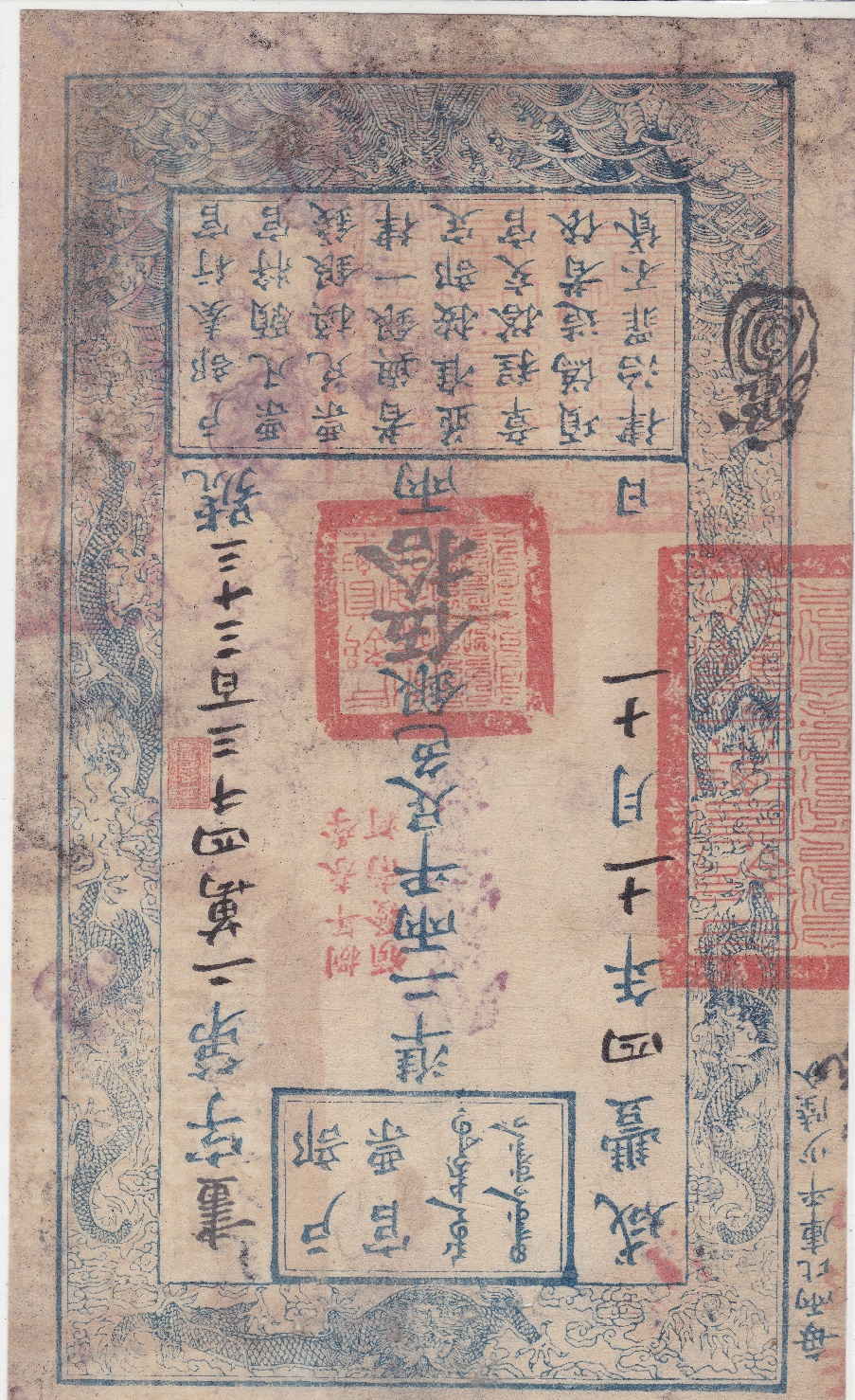 |
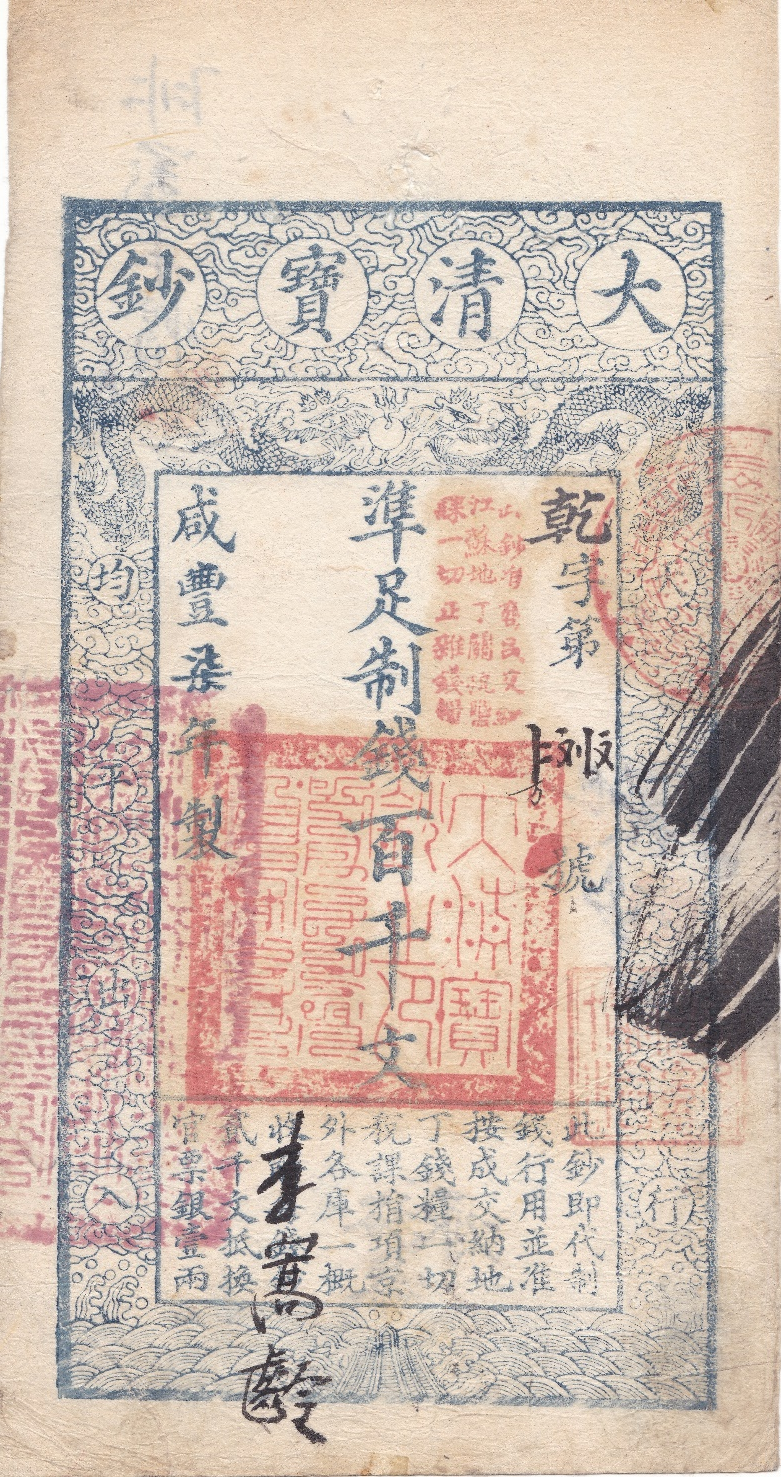 |
| Fig. 4 1851 300-tael bond | Fig. 5 1854 50-tael Hupoo Note | Fig. 6 1857 1000-cash Empire Note |
The Consensus of Chengdu Conference marks a new stage in the study of Chinese paper money. At such a new stage, the exhibition we held is of special commemorative significance. An extremely rare exhibit is the da ming tong xing bao chao [ 大明通行寶鈔 ] of the Ming dynasty which follows the style of the zhi yuan bao chao [ 至元寶鈔 ] of the Yuan dynasty.
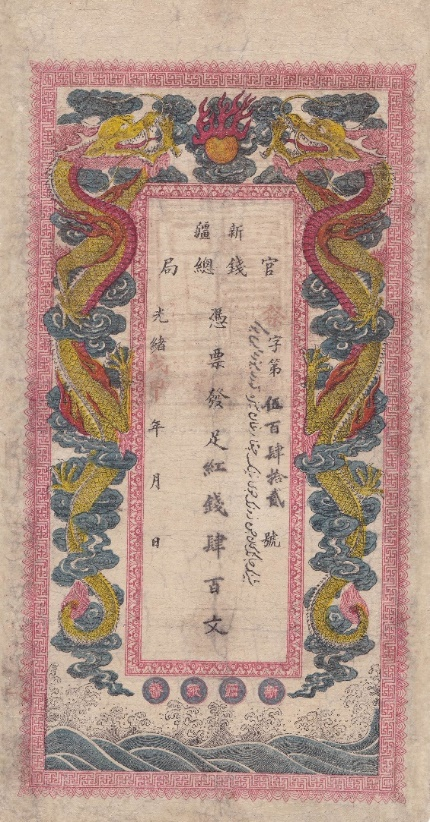 |
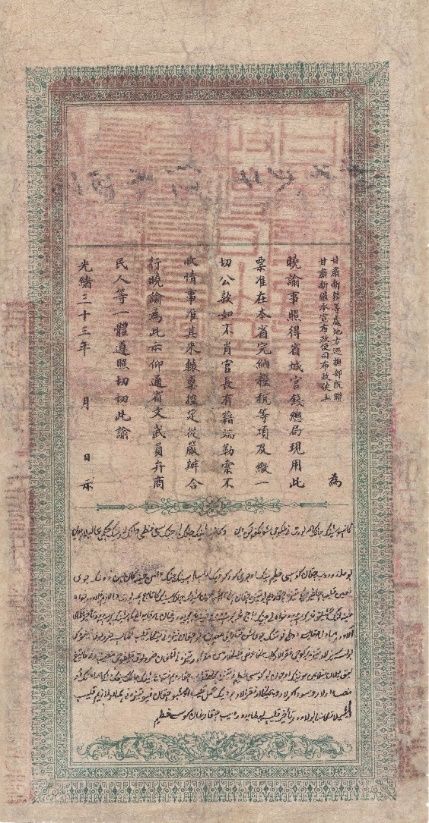 |
Fig. 7 1908 Sinkiang Government Treasury 400-cash note
Fig. 8 1896 Kiangsi Government Treasury 1000-cash note
 |
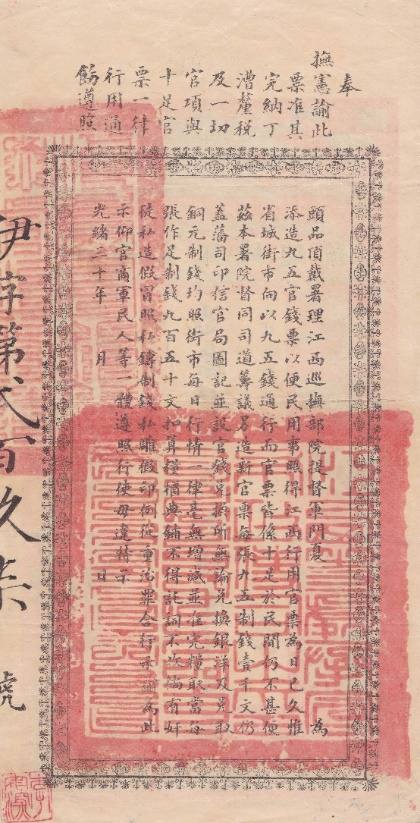 |
Fig. 8 1896 Kiangsi Government Treasury 1000-cash note
 |
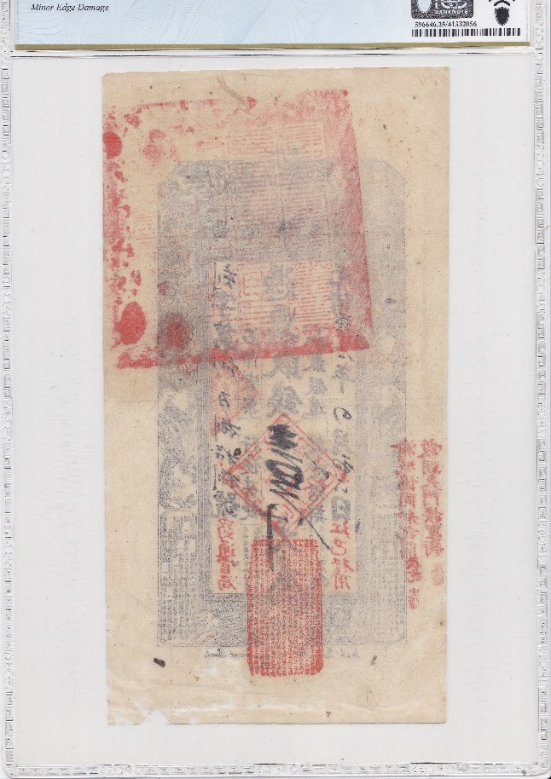 |
Fig. 9 1897 Shuh Tung (Shu Tong) Chinese Government Bank 1000-cash note
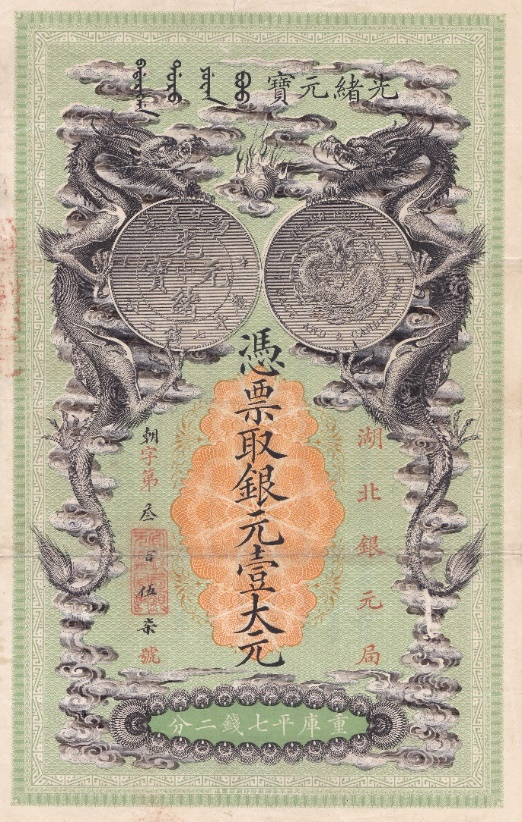 |
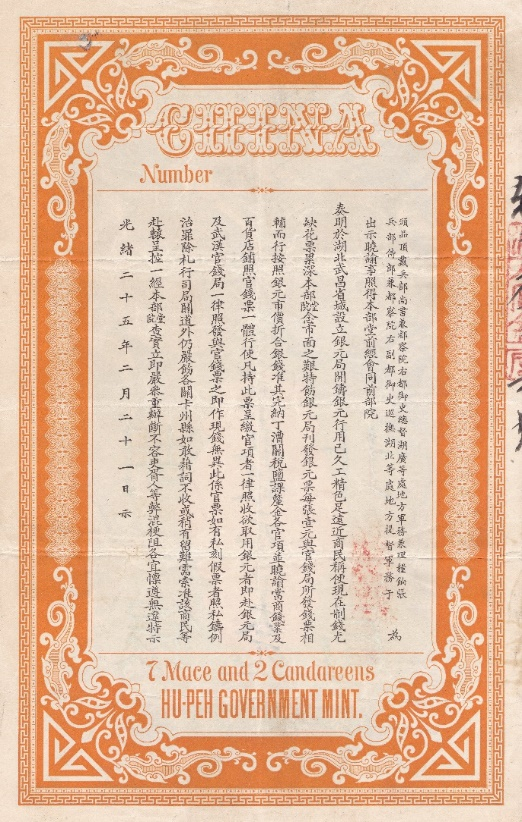 |
Fig. 10 1899 Hupeh Government Mint 1 dollar / 7 mace 2 candareens note
Fig. 11 1904 Szechuan Government Mint 1000-cash note
 |
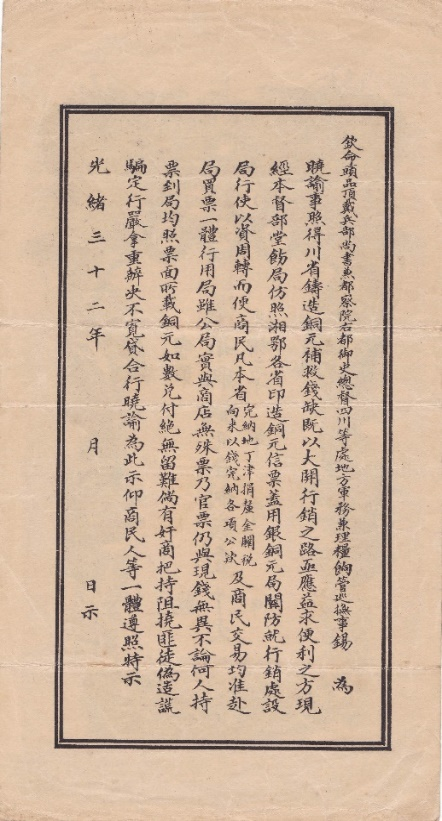 |
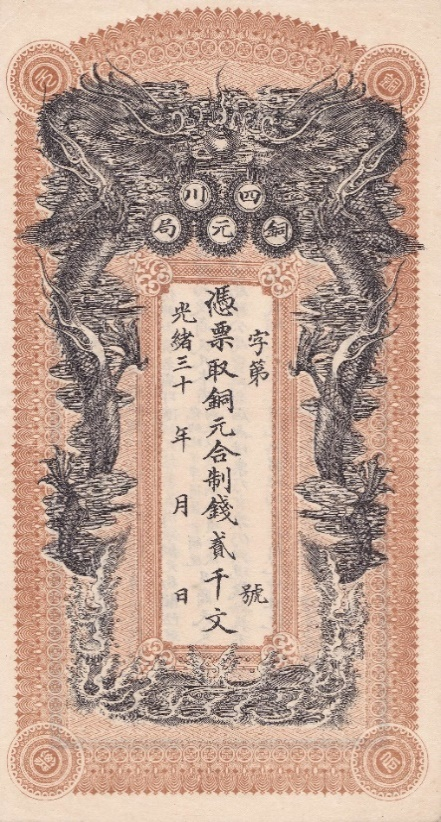 |
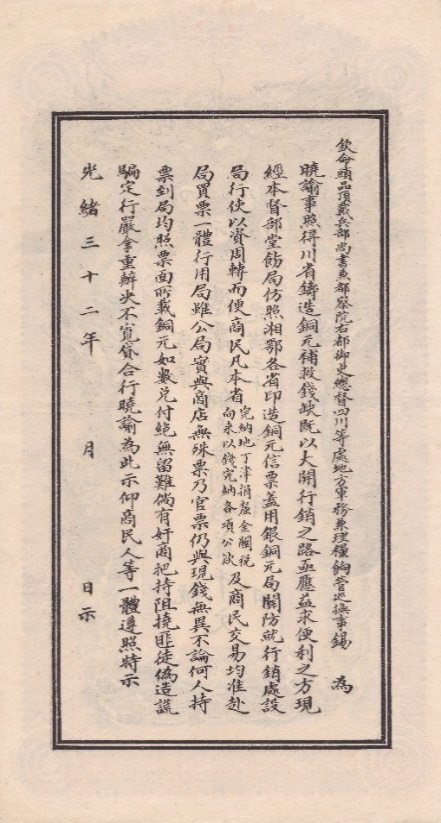 |
Fig. 12 1904 Szechuan Government Mint 2000-cash note
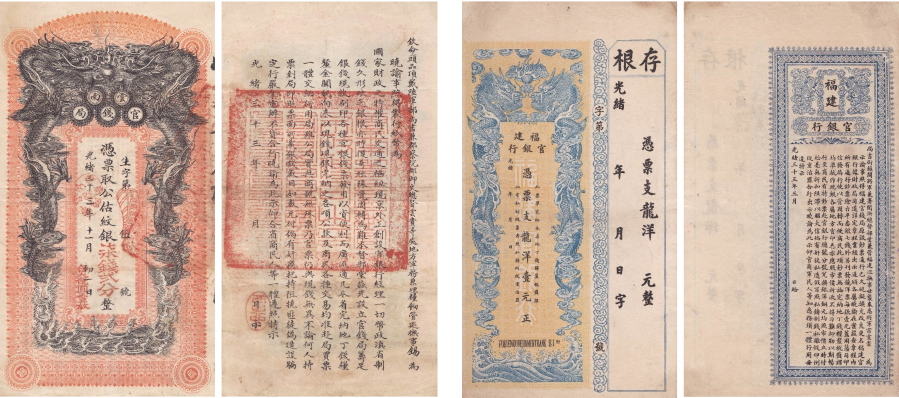
| Fig. 13 1907 Yunnan Government Mint 7 mace 2 candareens note |
Fig. 14 Fukien Government Bank 1 dollar note from Emperor Guangxu's reign |
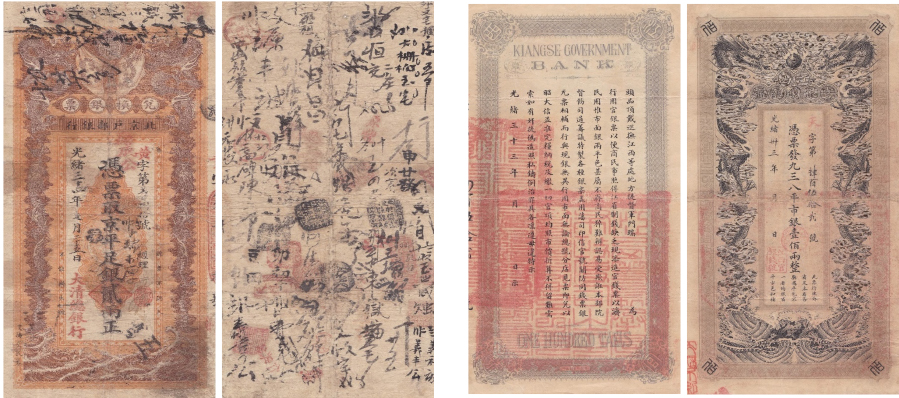
| Fig. 15 1895 Ta Ching Government Bank 2-tael note | Fig. 16 1907 Kiangsi Government Bank 100-tael note |
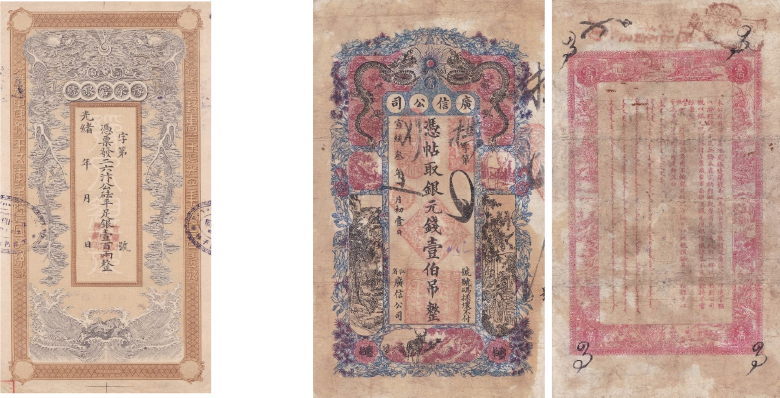
| Fig. 17 Honan Government Bank 100-tael from Emperor Guangxu's reign |
Fig. 18 1911 Kuanghsin Company 100-tiao note |
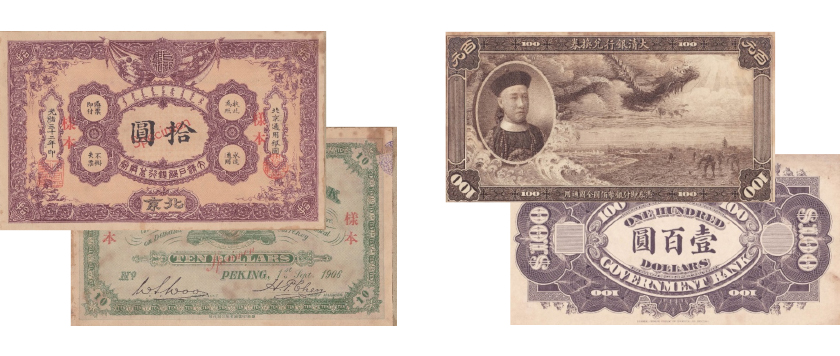
| Fig. 19 1906 Ta Ching Government Bank Peking 10-dollar note | Fig. 20 Ta Ching Government Bank 100-dollar note from Emperor Guangxu’s reign |
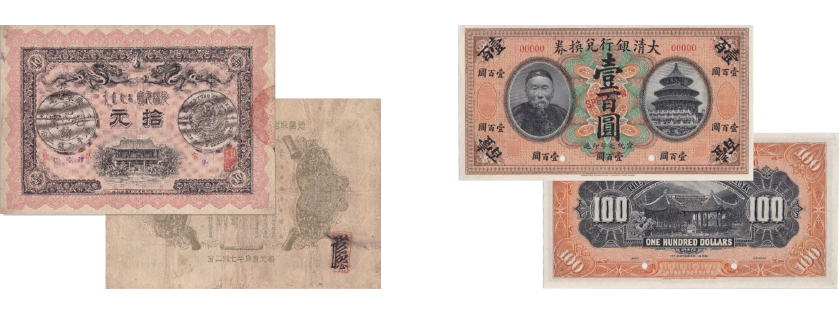
| Fig. 21 1907 Juangtung Government Bank 10-dollar note | Fig. 22 1909 Ta Ching Government Bank 100-dollar note |
With the development of economy and finance and the advancement of science and technology, tens of thousands of notes of various types were produced. Especially at the end of the Qing dynasty, the western advanced business concepts and printing techniques were introduced to China, which led the notes to change from the traditional style to the modern banknotes. The provincial official money bureaus printed tael notes, cash notes, and copper coin notes, which were all widely used at the time, and many rarities are hard to find nowadays, which are also wonderfully presented in our exhibition.
During the Republic of China period, the central government went through many ups and downs. Private banknotes were abolished, and national banks such as the Central Bank, the Bank of China, the Bank of Communications, and the Agricultural Bank of China were created or reformed to issue banknotes. These banknotes played an irreplaceable and positive role in stabilizing the financial system, consolidating the political regime, developing the economy, and relieving the people's livelihoods. In the Northern Expeditionary War and the War of National Resistance, it also made great contributions and had a worldwide impact. The banknotes issued by the Bank of Communications and Bank of China, in particular, are beautifully designed and printed in a wide range of varieties, with many rare and wonderful items.
In the early days, Kuangtung province, including Hong Kong and Macau, had a prosperous external trade, issued a wide variety of banknotes with distinctive characteristics, which were some of the most unique and beautiful among all Chinese banknotes. This is also one of the highlights of this exhibition for us to share with you.
Chinese banknotes are profound and rich in cultural connotations. Through the presentation of characters, patterns and designs, they not only inherited thousands of years of civilization, but also interacted with the East and the West. They are not only a testimony to the prosperity and development of the social economy, but also a beautiful picture. We hope that more people will pay attention to Chinese banknotes of the past dynasties, collect them, study them and pass them on, so that the culture of Chinese banknotes can be further promoted and glorified.
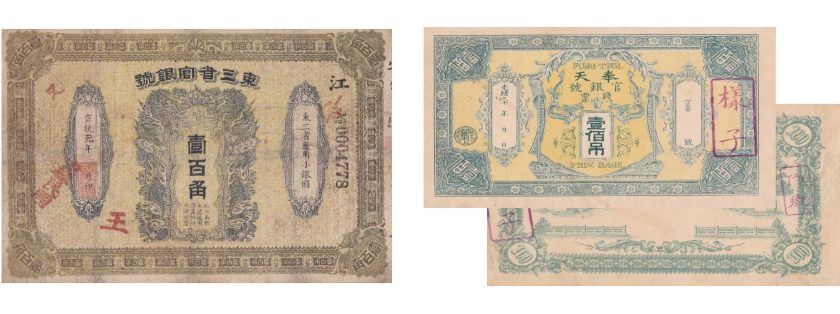
| Fig. 23 1909 Provincial Bank of the Three Eastern Provinces 100-cent note |
Fig. 24 Fengtien Government Bank 100-tial note |
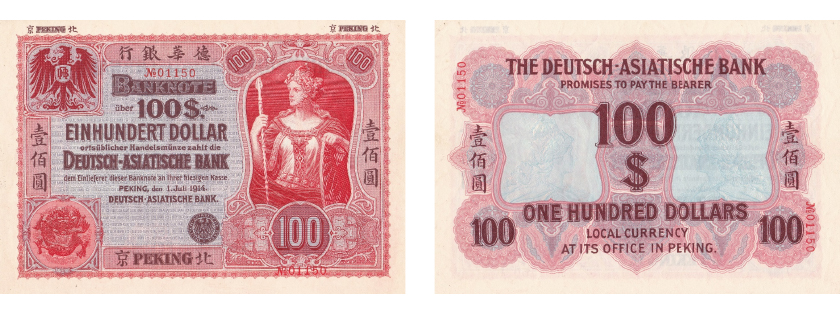
Fig. 25 1914 Deutsch Asiatische Bank Peking 100-dollar note
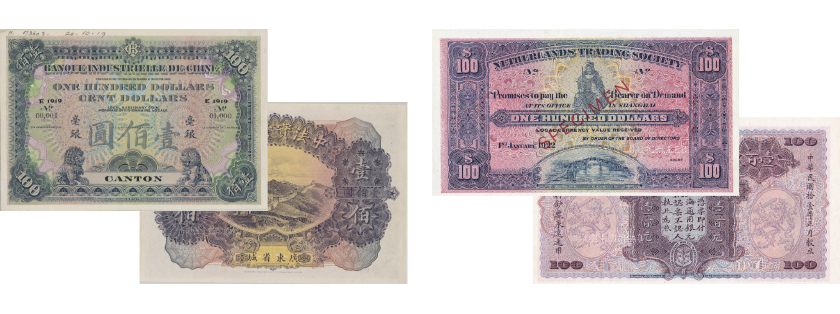
| Fig. 26 1922 Netherlands Trading Society 100-dollar note | Fig. 27 1922 Shanghai Holland Bank 100-dollar note |
